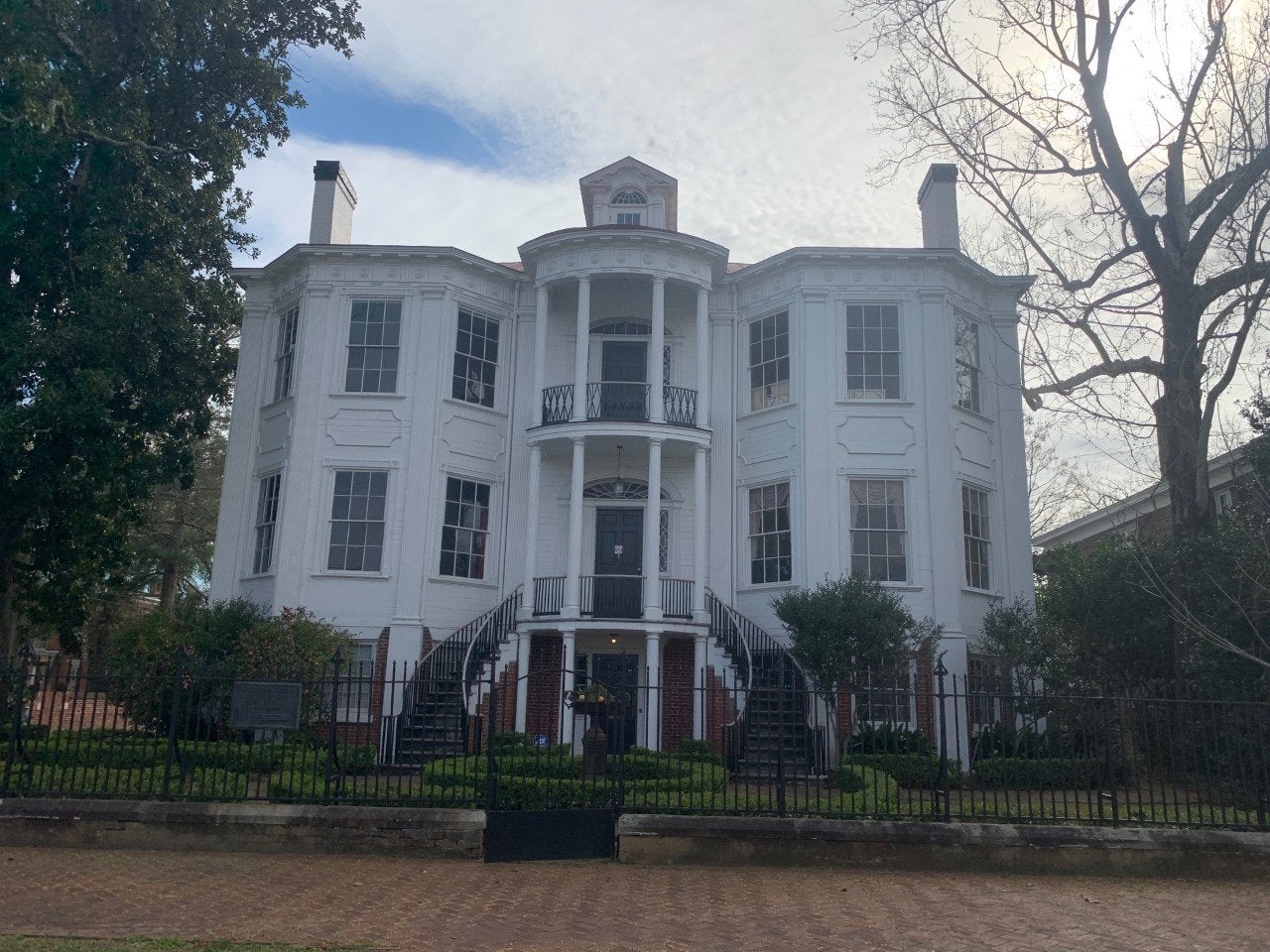The elaborate mansion at 506 Telfair St., which today houses the Gertrude Herbert Institute of Art, was once not considered to be stately work of art, but more like a white elephant and shortly after its construction was branded with the nickname of “Ware’s Folly.”
In Augusta’s post-revolution era, conservative society, Ware’s Folly was considered a symbol of excess. Even the former Georgia Governor and signer of the Declaration of Independence, George Walton, lived out his final years in a relatively modest home.
The home was built by, then, Augusta Mayor Nicholas Ware in 1818 and is the third oldest former residence in the city, beaten only by Meadow Gardens and The Ezekiel Harris House.
Ware was born in 1776, the same year Walton signed the Declaration. After studying medicine and law, Ware passed the bar and moved to Augusta to set up a law office.
Apparently, the young Ware also took to buying up large swaths of land on the outskirts of Augusta and ultimately ended with a large cotton plantation that stretched from Highland Avenue to North Leg/Sibley Road, according to the late Augusta Historian Erick Frazier.
[adrotate banner=”51″]
Ware also became one of the largest slave owners in the area with 62 slaves according to the 1810 census.
At the time, Augusta had moved far beyond its origins as a frontier outpost. The cotton and tobacco trades had exploded and Augusta was now being referred to as a “city.” When Ware arrived in town, Augusta already had the distinction of serving as the capital of Georgia for a decade before the government moved permanently to Atlanta.
It does not seem that Ware spent much time at his cotton plantation as he was more focused on law and politics. He was elected to the Georgia General Assembly and served from 1808 to 1811 and again in 1814 until 1815. In 1818, Ware ran for Mayor of Augusta and won.
It was during Ware’s mayoral administration that Augusta set about to build its first permanent Courthouse, and perhaps Ware reasoned that if Augusta would have a “Marble Palace,” that, as Mayor, he should have a palace of his own.
The Federalist and Charleston style creation he oversaw was nothing short of a palace.
Ware’s Folly is a visual masterpiece from the outside, rising four stories from the ground, containing three porticos and a double-winding staircase. Inside the home is no less impressive with intricate moldings, ornate fireplaces and a floating staircase that goes all the way up to the finished attic.
According to the late historian Ed Cashin, Ware supervised the building personally to suit his own “great taste.”
If Ware wished to inspire awe, he certainly succeeded. He also inspired a bit of derision as the price tag on the home was $40,000, almost a million dollars in today’s money. Living comfortably was expected of the elite, but extravagant shows of wealth were considered somewhat vulgar.
[adrotate banner=”15″]
Apparently, Ware’s Folly did not tarnish Ware’s reputation that much as he was appointed a U.S. Senator in 1821 where he would serve until his death in 1824 at the age of 48.
The home would go on to house several prominent families over the following years, with the Sibley and the Gardner families living in the mansion until it was bought by Olivia Herbert in 1937.
By the time Herbert acquired the property, it was showing signs of its age, but she must have been impressed with the so-called folly because she poured a ton of her own money into renovating the home and then donated it to the Augusta Art Club for use. Herbert made the donation in the name of her late daughter, Gertrude, and so the art club changed its name accordingly.
Over the past 80 years, the Gertrude Herbert Institute of Art has carried on its mission as an independent art school and exhibition space and its building, or Folly, is one of the most recognizable structures in Augusta to this day, which is just what Ware wanted.
…And that is something you might not have known
Scott Hudson is the senior reporter for The Augusta Press. Reach him at scott@theaugustapress.com











